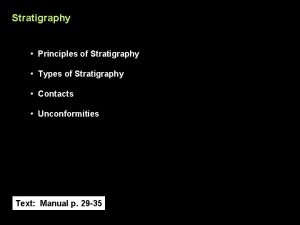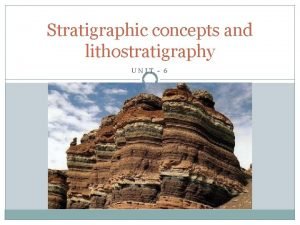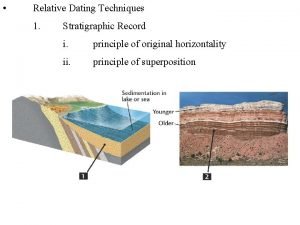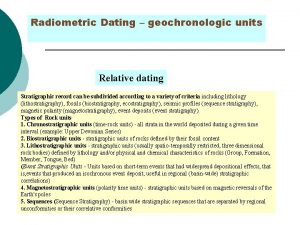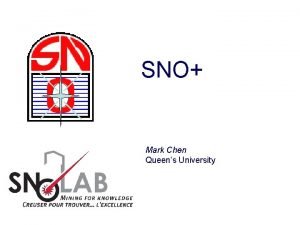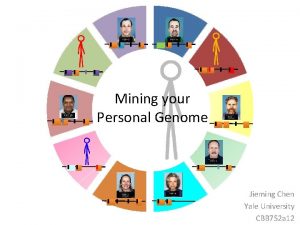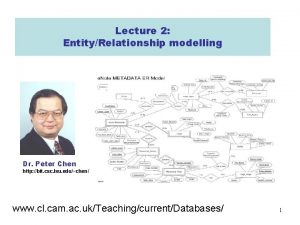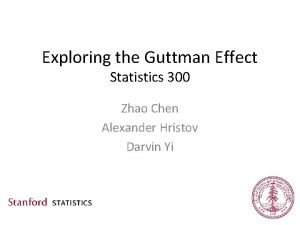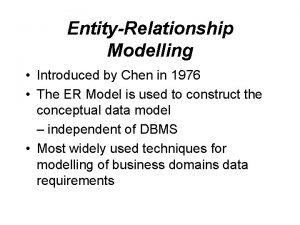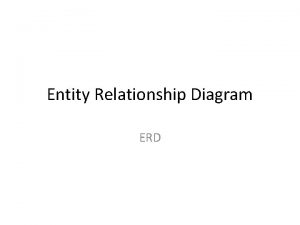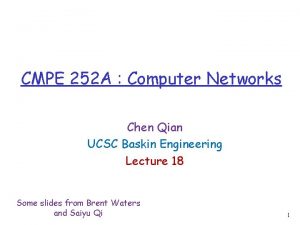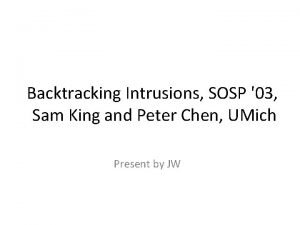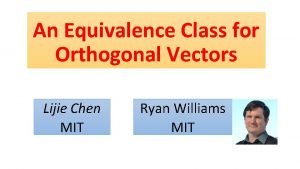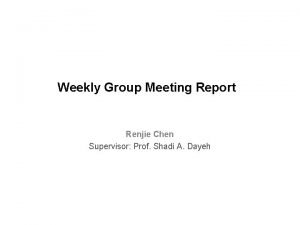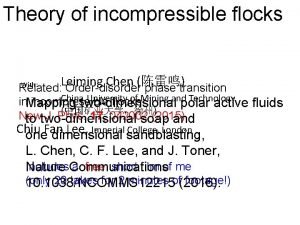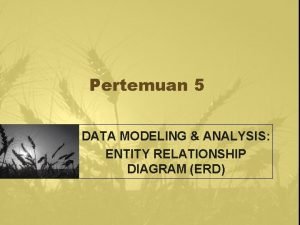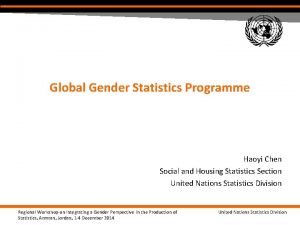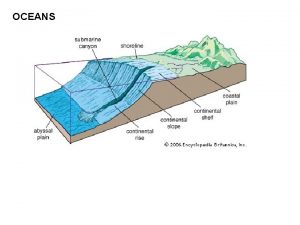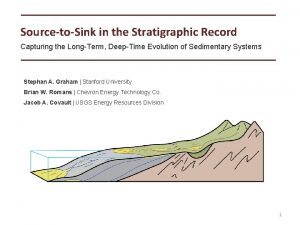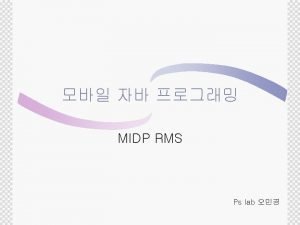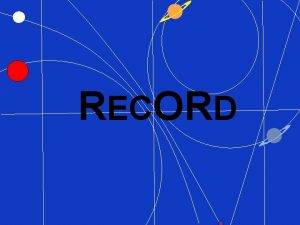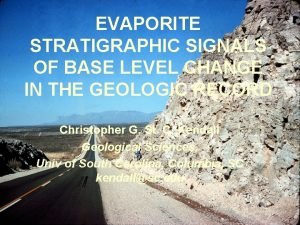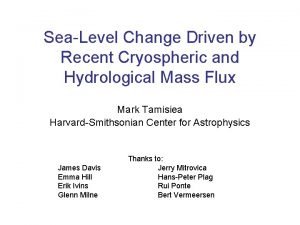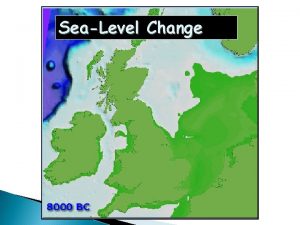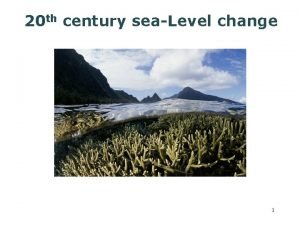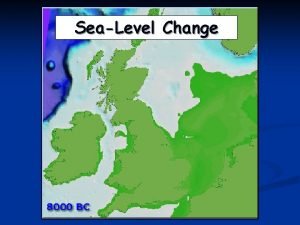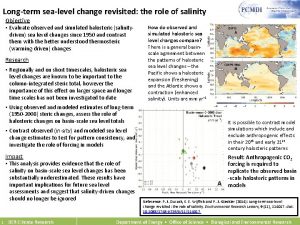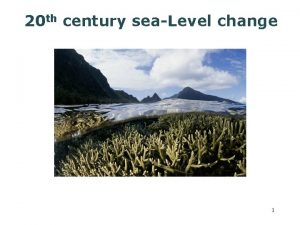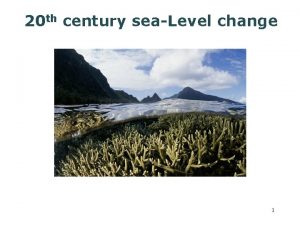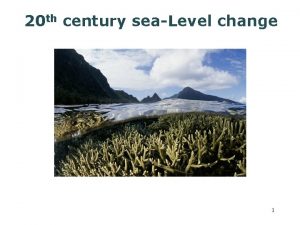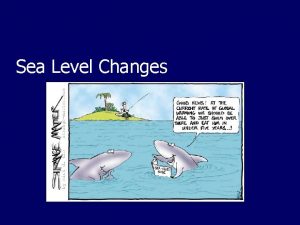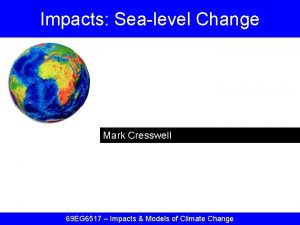Stratigraphic Record of SeaLevel Change Prof YueGau Chen
























































- Slides: 56

Stratigraphic Record of Sea-Level Change Prof. Yue-Gau Chen

A. Conventional Stratigraphic Record of Sea-level change a. Oscillatory changes in sea level relative to the continents, on time scales of <10 my, have long been inferred from paleobathymetric variations in facies successions, and from stratigraphic evidence.

b. degree of confidence depending on the reliability and resolution of the facies interpretation, the precision of the biostratigraphic correlation and the extent of such correlation. c. even if depositional base level is modulated by eustasy, a given eustatic event may not be evident in the facies that are preserved, and max. and min. Water depth or transgression/ regression may not be precisely synchronous at different localities.

Column section a. realize the relationships between sedimentary facies and sea-level b. transgression and regression c. unconformity, diastem and hiatus d. absolute sea-level change or tectonic movement


B. Sequence Stratigraphy and Sea-level Emphasizing the importance of the space that is made available within a basin for sediment to be deposited and the amount of sediment supplied.

Sediment accommodation space and its relationship to eustatic sea-level

Shallow-marine equilibrium profile

The equilibrium profiles of an alluvial system

Parasequence

Long-term changes over two parasequences


Only consider crustal subsidence and sea-level

HST Highstand Systems Tract

SB Sequence Boundary


FSST Falling Stage Systems Tract

Different styles of sea-level falling

LST Lowstand Systems Tract

TS Transgressive Surface

TST Transgressive System Tract

MFS Maximum Flooding Surface



Using dating methods to know the age Combining the depths of identified SB, TS and MFS To reconstruct the sea-level change curve, but it is hard to understand the entire picture


C. Seismic Stratigraphic Record of Sea-level Change a. Seismic stratigraphy is an approach to the investigation of sea-level fluctuations that is less sensitive than conventional stratigraphy. b. Vail et al. (1977) suggested that many sequence boundaries are of the same age in different parts of the world and are therefore due primarily to a global process, eustasy. They also developed a technique for quantifying the amplitude of relative sea-level change from the saw-tooth patterns of onlap observed on seismic sections.

c. “relative change of coastal onlap” to “eustatic curve” of Mesozoic and Cenozoic (Haq et al. , 1987). d. seismic stratigraphy provides important information about the timing of sea-level fluctuations, on a time scale of m. y. , but little about magnitudes.






D. Seismic profile a. seismic imaging of stratal geometry b. seismic resolution 1. vertical resolution: acoustic velocity, burial depth, acoustic frequency *frequency: 20 Hz *wavelength in shale: 210 m *layer: a single unit or composites *layers as thin as 1/4 wavelength: reflections from the upper and lower surfaces are discernible *<1/4 wavelength: the distinct contributions from the upper and lower surfaces cannot be identified




2. horizontal resolution: frequency of the source, depth of the reflector *frequency: 20 Hz *acoustic velocity: 2. 25 km/sec *reflection from a depth 4 sec - diameter 500 m



c. recognition of unconformities in seismic profile 1. depositional sequence: is a stratigraphic unit composed of a relatively conformable succession of genetically related strata and bounded at its tops and base by unconformities or their correlative conformities 2. lower boundaries: baselap (onlap, downlap), concordance 3. upper boundaries: erosional truncation, toplap, concordance d. interpretation of sea-level change









D. Summary Basins should be selected for study on the basis of stratigraphic completeness; simple tectonic history; and the current or future availability of high-resolution seismic sections, fully cored boreholes.


E. References 1. Haq, B. U. , Hardenbol, J. and Vail, P. R. (1987) Chronology of fluctuating sea levels since the Triassic. Science 235, 1156 -1167. 2. Sheriff, R. F. (1980) “Seismic Stratigraphy”, Published by International Human Resources Development Corporation, Boston, 227 p. 3. Christie-Blick, N. , Mountain, G. S. and Miller, K. G. (1990) Seismic stratigraphic record of sea-level change. In “Sealevel Changes”, National Academy Press, Washington D. C.




 Stratigraphic contacts
Stratigraphic contacts What is the smallest lithostratigraphic rock unit?
What is the smallest lithostratigraphic rock unit? Principles of stratigraphy
Principles of stratigraphy Stratigraphic clause
Stratigraphic clause Colusuem
Colusuem Chen chen berlin
Chen chen berlin Specimen record observation
Specimen record observation Is mashing potatoes a chemical change
Is mashing potatoes a chemical change Examples of chemical change
Examples of chemical change Absolute change and relative change formula
Absolute change and relative change formula What is an integer
What is an integer Differences between physical and chemical changes
Differences between physical and chemical changes Input and output markets
Input and output markets Supply and demand curve shifts
Supply and demand curve shifts Enagic founder
Enagic founder Reactive change is change that
Reactive change is change that Physical and chemical changes examples
Physical and chemical changes examples Spare change physical versus chemical change
Spare change physical versus chemical change Rocks change due to temperature and pressure change
Rocks change due to temperature and pressure change Physical change vs chemical change venn diagram
Physical change vs chemical change venn diagram Physical change
Physical change Baking chemical change
Baking chemical change First order change adalah
First order change adalah Is chopping wood a physical change
Is chopping wood a physical change Climate change 2014 mitigation of climate change
Climate change 2014 mitigation of climate change Chen xinyu
Chen xinyu Nêu các bước chèn hình ảnh
Nêu các bước chèn hình ảnh Mark chen queens
Mark chen queens Andrew chen finance
Andrew chen finance Hao chen adelaide
Hao chen adelaide Kaifei chen
Kaifei chen Xinyun chen
Xinyun chen Rory chen
Rory chen Jieming chen
Jieming chen Peter chen 1976
Peter chen 1976 Vin chen
Vin chen Guttman effect
Guttman effect Guanliang chen
Guanliang chen It was introduced by chen in 1976
It was introduced by chen in 1976 Pengertian entity relationship diagram
Pengertian entity relationship diagram Hou pei chen
Hou pei chen Abe
Abe Umich peter chen
Umich peter chen Lijie chen
Lijie chen Yan chen northwestern
Yan chen northwestern Chen miller
Chen miller Renjie chen
Renjie chen Colin greineder
Colin greineder Leiming chen
Leiming chen Alex k chen
Alex k chen Mark chen queens
Mark chen queens Xingang chen
Xingang chen Penggambaran relationship dalam diagram chen dengan simbol?
Penggambaran relationship dalam diagram chen dengan simbol? Berlin chen
Berlin chen Haoyi chen
Haoyi chen Sight translation
Sight translation Kardinalitäten chen notation
Kardinalitäten chen notation
